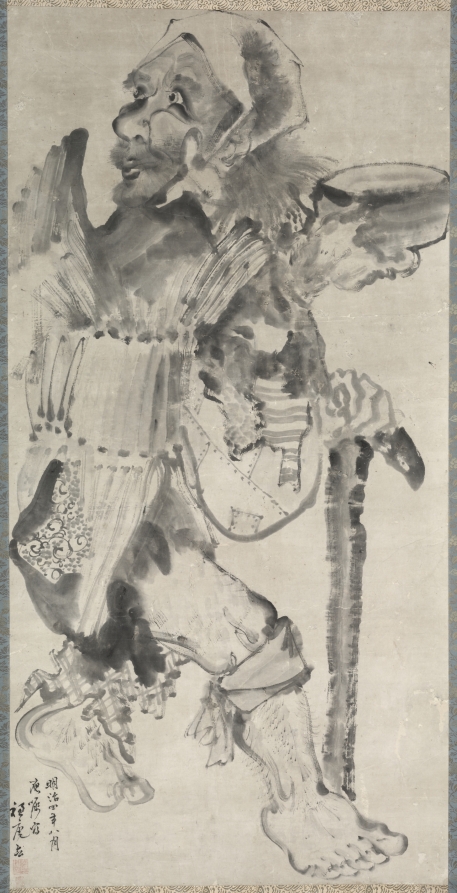| schema:description 9 | "id: 154263" |
| schema:description | "technique: hanging scroll; ink on paper" |
| schema:description | "measurements: Overall: 215.3 x 93 cm (84 3/4 x 36 5/8 in.); Painting only: 141 x 70.8 cm (55 1/2 x 27 7/8 in.)" |
| schema:description | "collection: ASIAN - Hanging scroll" |
| schema:description | "creditline: John L. Severance Fund" |
| schema:description | "tombstone: Beggar (Kojiki), 1871. Suian Hirafuku (Japanese, 1844-1890). Hanging scroll; ink on paper; overall: 215.3 x 93 cm (84 3/4 x 36 5/8 in.); painting only: 141 x 70.8 cm (55 1/2 x 27 7/8 in.). The Cleveland Museum of Art, John L. Severance Fund 1988.73...(more)" |
| schema:description | "culture: Japan, Meiji period (1868-1912)" |
| schema:description | "type: Painting" |
| schema:description | "wall_description: The Japanese term for beggar, kojiki, derives from the word kotsujiki, which refers to Buddhist monks taking bowls from door to door to request sustenance. The son of the artist Suian Bunrō, Suian Hirafuku was born in Kakunodate in Japan’s northern Akita prefecture. When he was 16, he went to study in Kyoto. In 1880 he took first place with another painting titled Beggar at the third Akita Prefectural Industrial Exposition, and in 1890, he took second prize for technical achievement with Nursing Tigress at the third National Industrial Exposition....(more)" |

